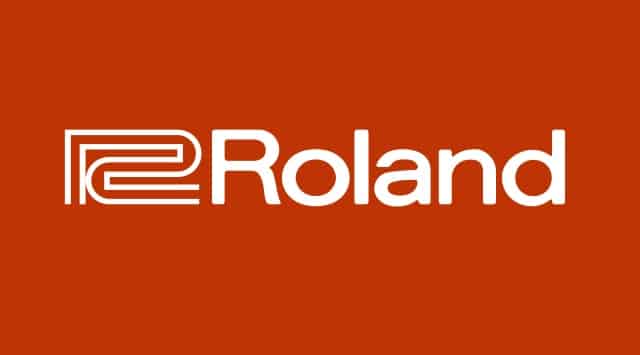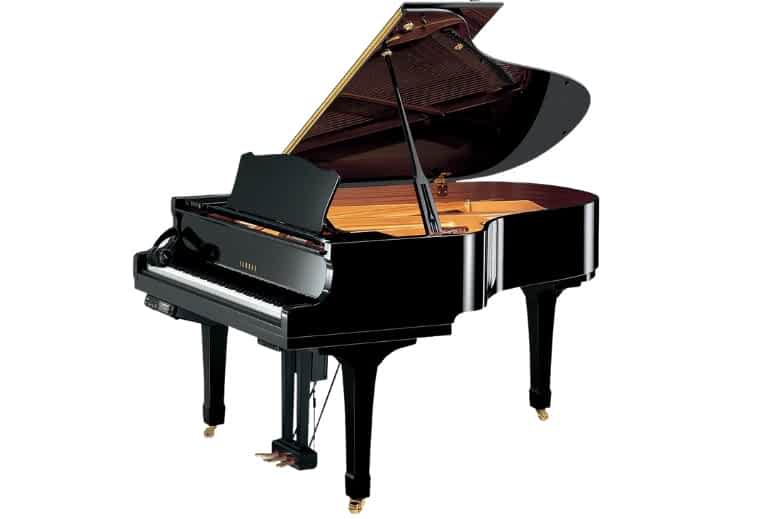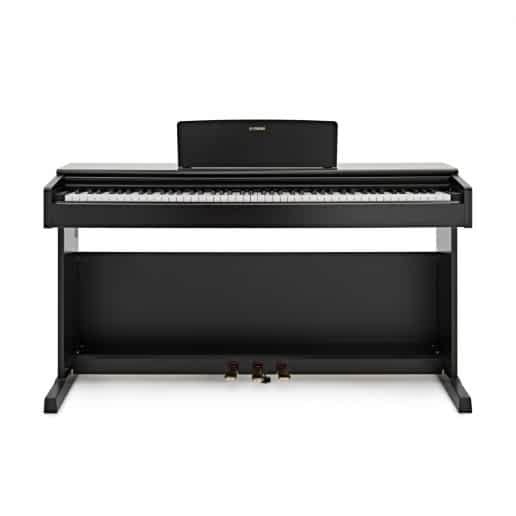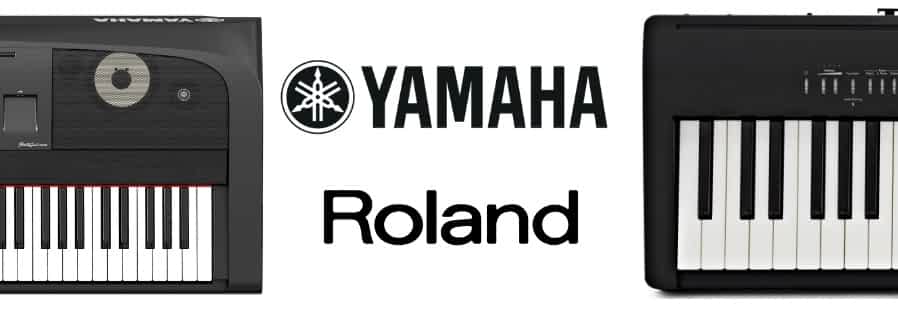Best
Digital Piano for Beginners
-
Overall: Includes Virtual Resonance Modeling (VRM) For Realistic Sound
-
Best Feature: Features Natural Wood X (NWX) Keyboard Technology
-
TedScore™: 10/10
Best
Yamaha Digital
Piano
PIANO FEEL
-
Overall: Adds Elegance To Any Room With Its Grand Piano Curves
-
Best Feature: Renowned For Its All-Wood Grand Piano Key Actions
-
TedScore™: 10/10
Best
Roland Digital
Piano
On The Go
-
Overall: Has A SuperNATURAL Piano Sound Engine That Supports 256-Note Polyphony
-
Best Feature: Equipped With 88 Keys, And A Standard-Size Keyboard With An Ivory Texture
-
TedScore™: 10/10
Roland Digital Piano against Yamaha – now isn’t that a question that’s been around for ages? But don’t worry! That’s exactly why I’m here to help!
Roland and Yamaha are two of the most popular digital piano brands. They both offer a variety of models that cater to different skill levels and budgets, making it easy for anyone to find a suitable digital piano.
However, there are some differences between the two brands that you should consider before making a purchase.
Keep reading, and we’ll give you the lowdown on the similarities and differences between Roland and Yamaha digital pianos so you can make an informed decision and rock out like a pro.
The History of Roland in Piano Making

Roland is a Japanese company that was founded in 1972 and quickly became a leading innovator in electronic music technology. In the 1980s, Roland introduced its first digital pianos, which offered a more portable and affordable alternative to traditional acoustic pianos.
Over the years, Roland continued to refine its digital piano designs, introducing new features like touch-sensitive keys, realistic sound samples, and advanced connectivity options.
Today, Roland is known for its high-quality digital pianos that cater to a wide range of players, from beginners to professionals, and offer a range of benefits like portability, versatility, and advanced technology.
What Pianos Does Roland Produce?

Roland produces a wide range of digital pianos, from entry-level models to high-end professional instruments.
One of the things that sets Roland apart from other digital piano manufacturers is their commitment to innovation. They’re constantly pushing the boundaries of what is possible with digital pianos and have introduced several groundbreaking technologies over the years.
For example, Roland was one of the first companies to introduce touch-sensitive keys, which allowed players to control the volume and tone of their playing simply by varying the pressure they applied to the keys.
They also introduced advanced sound modelling technology, which uses complex algorithms to replicate the sound of acoustic pianos with incredible accuracy.
Roland is a brand that is synonymous with quality and innovation in the world of digital pianos. Whether you are a beginner or a seasoned professional, there is likely a Roland digital piano that will meet your needs and exceed your expectations.
The History of Yamaha in Piano Making

Yamaha’s piano-making history began in 1900 when the company’s founder, Torakusu Yamaha, built his first piano. At the time, Yamaha was primarily a manufacturer of reed organs, but Torakusu saw the potential in the piano market and decided to branch out.
Over the years, Yamaha continued to innovate and improve their pianos, introducing new technologies and design features to make their instruments more responsive and expressive. In the 1950s, Yamaha began exporting their pianos to other countries, and their reputation for quality and innovation quickly spread.
Today, Yamaha is one of the largest and most respected manufacturers of musical instruments worldwide, with a wide range of pianos catering to musicians of all levels. Whether you’re a beginner looking for your first digital piano or a professional pianist needing a high-end instrument, Yamaha has a few digital piano models that will meet your needs.
Yamaha has a long and storied history in piano making, with a reputation for quality and innovation that has made them one of the most respected names in the industry.
What Pianos Does Yamaha Produce?

Yamaha produces a wide range of pianos to suit the needs and preferences of different players. The company’s lineup includes acoustic pianos such as grand pianos, upright pianos, and hybrid pianos that combine acoustic and digital technologies.
Yamaha also offers a range of digital pianos, including portable keyboards, stage pianos, and home pianos, with advanced features like weighted keys, realistic sound samples, and connectivity options.
They also produce speciality pianos like the Disklavier Player Stage Piano, which can reproduce performances with stunning accuracy, and the Silent Piano, which allows players to practice silently using headphones.
Digital Pianos of
Roland and Yamaha
Feel & Playability
Roland and Yamaha produce digital pianos with excellent feel and playability, thanks to their advanced keyboard technologies.
Yamaha’s digital pianos feature graded hammer action and real wood back keys, which mimic the feel of playing on an acoustic piano and provide a realistic touch response. Roland’s digital pianos use PHA-4 keyboard technology, which includes a progressive hammer action mechanism and ivory feel keys that provide a natural, authentic playing experience.
Both brands also offer digital pianos with weighted keys, which help to replicate the feel of playing on a traditional piano and provide a more expressive playing experience.

Tone
Roland and Yamaha are known for producing high-quality digital pianos, thanks to their advanced sound sampling technologies.
Yamaha’s digital pianos use Pure CF Sound Engine, which captures the sound of a Yamaha concert grand piano and reproduces it with stunning accuracy. Roland’s digital pianos use SuperNATURAL Piano sound technology, which combines advanced modeling and sampling techniques to produce sound and create a rich, expressive piano sound.
Both brands also offer a variety of digital effects and sound customization options, allowing players to create their own unique piano sounds and tailor their playing experience to their preferences.
Piano Features
Both Roland and Yamaha offer digital pianos with a range of advanced features that enhance the playing experience and provide greater versatility.
Yamaha’s digital pianos offer features like USB connectivity, allowing players to connect their piano to a computer or mobile device for recording and playback. Yamaha also offers the Disklavier ENSPIRE Player Piano, which can reproduce performances with stunning accuracy and includes a range of advanced features like remote control and built-in streaming services.
Roland’s digital pianos offer features like Bluetooth connectivity, allowing players to stream music wirelessly from their mobile devices. Roland also offers digital pianos with-in accompaniment styles, which provide a range of backing tracks and rhythms to play along with, and advanced recording features, which allow the top level digital piano players to capture and edit their performances.

Price
The price of digital pianos from Roland and Yamaha varies depending on the model and features.
Yamaha’s digital pianos range from around $500 for entry-level models to over $10,000 for high-end hybrid pianos. Roland’s digital pianos are similarly priced, with entry-level models starting at around $500 and high-end models costing upwards of $7,000.
Both brands offer a range of digital pianos at different price points, making it easy for players to find a suitable instrument within their budget.
While more advanced features, like player piano technology and hybrid designs, can add significantly to the cost, both brands offer great models of digital pianos that provide high-quality sound and playability at more affordable prices.
Top Selling Digital Pianos from Roland
Roland FP-30X Digital Piano
The Roland FP-30X digital piano is the updated version of the popular FP-30, which has been a favourite among beginners and budget-conscious buyers for years. The FP-30X boasts some impressive specs, including 88 fully weighted keys, touch sensitivity, and SuperNATURAL piano sound.
It also features 56 instrument sounds, modes like Split Dual Duo, and even a 1-track MIDI recorder. The design is sleek and modern, available in black or white, and perfect for home use.

PERFECT FOR: players at home or on the go
FEATURES: Equipped with 88 keys, and a standard-size keyboard with an ivory texture
OTHER INFO: Has a SuperNATURAL piano sound engine that supports 256-note polyphony
Roland FP-30X Digital Piano
When you click ‘Check Price’, you’ll see there are loads of great places to buy this item. Our personal favorite is Sweetwater for the US, and Thomann and Gear4Music for the UK & Europe.
They are the largest music retailers, with excellent customer service, competitive prices, really fast shipping, and the longest guarantees.
- Supports Bluetooth connectivity for wireless audio streaming and MIDI connection
- Delivers a touch and tone that closely mimics that of an acoustic piano
- Its compact and lightweight design makes it easy to transport
- None!
The professional musician who wrote this article combined many things,
from the product build, manufacturer’s reputation through to feedback
from other users, to create our famous TedScore™.
Roland F701-CB Compact Digital Piano
With its sleek and stylish design, this piano features a low-profile body that minimizes space while providing all the necessary features for a superior playing experience. The F701-CB boasts an 88-key fully-weighted keyboard with Ivory simulation and PHA-4 Standard Keyboard, making it feel like a traditional piano.
With adjustable touch sensitivity and a graphic OLED display, you can easily customize your playing experience to your liking. Plus, with 324 instrument sounds, 256-note polyphony, and various effects such as Ambience and Brilliance, the F701-CB is perfect for any style of music.

PERFECT FOR: beginners
FEATURES: Features a PHA-4 Standard keyboard for a realistic piano-playing experience
OTHER INFO: Supports Bluetooth connectivity for audio playback and MIDI connection
Roland F701-CB Compact Digital Piano
- Has a sleek and stylish design with a small footprint
- Utilizes SuperNATURAL Piano technology to produce high-quality sound
- Features a user-friendly interface and easy-to-navigate design
- Higher price range
The professional musician who wrote this article combined many things,
from the product build, manufacturer’s reputation through to feedback
from other users, to create our famous TedScore™.
Roland FP 10 Digital Piano
It’s the latest addition to Roland’s FP portable line of digital pianos and offers high-quality piano sound and hammer key action, at an unbeatable price. With its 88 fully weighted keys and PHA-4 Standard Keyboard, the FP-10 makes for an ideal entry-level portable piano too, but don’t rule it out for gigging purposes.
It’s lightweight and compact, with 15 instrument sounds, modes like Dual Duo, and a long list of preset songs and demos.

PERFECT FOR: beginner and intermediate players
FEATURES: Equipped with 88 fully weighted keys with hammer action
OTHER INFO: The SuperNATURAL sound engine produces authentic and rich piano tones
Roland FP 10 Digital Piano
When you click ‘Check Price’, you’ll see there are loads of great places to buy this item. Our personal favorite is Sweetwater for the US, and Thomann and Gear4Music for the UK & Europe.
They are the largest music retailers, with excellent customer service, competitive prices, really fast shipping, and the longest guarantees.
- Compact and lightweight, making it easy to transport and store
- Ideal for learning and practice purposes
- Offers an affordable price compared to other digital pianos with similar features
- Boasts high-quality sound and touch response that emulates a traditional acoustic piano
- Provides multiple connectivity options, including Bluetooth, MIDI, and USB
- Has a limited sound selection
The professional musician who wrote this article combined many things,
from the product build, manufacturer’s reputation through to feedback
from other users, to create our famous TedScore™.
Roland Go: Piano 88 Key Digital Piano
You can develop proper technique early with 88 semi-weighted wooden keys that resemble a traditional piano. It also offers a lightweight, rugged, fully battery-powered design, making it easy to take wherever your music takes you.
The high-quality Bluetooth speakers allow you to connect to any device and access various learning resources to make your piano practice more enjoyable. While the GO:PIANO may have only four tones (Piano, E. Piano, Organ, and Strings), the sounds it produces are of very high quality.

PERFECT FOR: all playing levels
FEATURES: A portable and lightweight digital piano that allows you to play anywhere
OTHER INFO: Premium quality Roland sounds are available onboard
Roland Go: Piano 88 Key Digital Piano
When you click ‘Check Price’, you’ll see there are loads of great places to buy this item. Our personal favorite is Sweetwater for the US, and Thomann and Gear4Music for the UK & Europe.
They are the largest music retailers, with excellent customer service, competitive prices, really fast shipping, and the longest guarantees.
- Equipped with Bluetooth connectivity
- Offers free online tuition from Skoove
- Provides the flexibility to play anywhere with the portable and lightweight digital piano
- Easy to store and transport with a slim and compact design
- Sustain pedal is not included
The professional musician who wrote this article combined many things,
from the product build, manufacturer’s reputation through to feedback
from other users, to create our famous TedScore™.
Roland LX705 Digital Piano Package
The Roland LX705 Digital Piano may not be the flagship or even mid-priced, but it delivers a powerful performance that won’t break the bank. With a choice of authentic piano tones, onboard ambience effects, Bluetooth connectivity, and a responsive PHA-50 keyboard, you’ll be free to express yourself with just a touch of your fingers fully.
And let’s not forget the Progressive Damper Action pedals that rival the best acoustic pianos out there in terms of response.

PERFECT FOR: intermediate to advanced pianists
FEATURES: Utilizes SuperNATURAL modelling technology to produce realistic sound
OTHER INFO: Features a Progressive Damper Action pedal that provides a realistic response
Roland LX705 Digital Piano Package
- Supports Bluetooth connectivity for wireless audio streaming and MIDI control
- Compact and stylish design that is suitable for small spaces
- Offers an authentic sound and feel of a grand piano
- Includes headphones and an adjustable stool
- High price point compared to other digital pianos in its class
The professional musician who wrote this article combined many things,
from the product build, manufacturer’s reputation through to feedback
from other users, to create our famous TedScore™.
Top Selling Digital Pianos from Yamaha
Yamaha N1X AvantGrand Hybrid Digital Piano
With its elegant and distinctive curves, this piano responds and feels like a real acoustic grand piano action, allowing you to enjoy playing to the fullest. You’ll get two world-class grand pianos in one and an evolving sonic spectrum, thanks to virtual resonance modelling (VRM).
The N1X also boasts a fully immersive headphone experience, so you can play quietly without worrying about disturbing others. Plus, with the Smart Pianist app integration and USB audio recorder, you can easily connect with technology to enhance your playing experience.

PERFECT FOR: beginners to professional pianists
FEATURES: Renowned for its all-wood grand piano key actions
OTHER INFO: Adds elegance to any room with its grand piano curves
Yamaha N1X AvantGrand Hybrid Digital Piano
- Provides an authentic grand piano presence with a 4-channel speaker system
- Offers two legendary concert grand voices in one piano.
- Includes three months of Flowkey Premium
- Features the unique and classic curves of an acoustic grand piano but in a sleek, compact size
- None!
The professional musician who wrote this article combined many things,
from the product build, manufacturer’s reputation through to feedback
from other users, to create our famous TedScore™.
Yamaha YDP 145 Digital Piano
The Yamaha YDP-145 is a popular digital piano that offers a range of advanced features and high-quality sound at an affordable price point. The YDP-145 features Yamaha’s Pure CF Sound Engine, which captures the sound of a Yamaha concert grand piano and reproduces it with stunning accuracy.
It also includes a range of advanced features like USB connectivity, allowing players to connect the piano to a computer or mobile device for recording and playback, and a built-in two-track recorder for capturing and editing performances.

PERFECT FOR: beginners to intermediate players
FEATURES: Features a Graded Hammer Standard (GHS) keyboard with matte keytops for a realistic piano feel
OTHER INFO: Includes a Yamaha CFX concert grand piano sound as a built-in voice
Yamaha YDP 145 Digital Piano
- Has 88 weighted keys that offer an expressive playing feel
- Delivers an authentic and realistic sound and playing experience
- Comes with a user-friendly interface that is easy to navigate
- No Bluetooth connection
The professional musician who wrote this article combined many things,
from the product build, manufacturer’s reputation through to feedback
from other users, to create our famous TedScore™.
Yamaha DGX 670 Digital Piano
This model is a significant upgrade from previous DGX versions, boasting improved piano samples and features from the Yamaha PRO series of arranger keyboards. With its 601 voices, including 9 VRM voices that use Yamaha’s virtual resonance modelling technology, and 256 notes of polyphony, the DGX-670 offers a wide range of quality sound options.
Plus, it features a 16-track MIDI recorder and USB audio recorder for convenient recording and playback. And the new design is a marked upgrade from previous DGX models, with a textured plastic construction that feels more premium than ever before.

PERFECT FOR: beginners, intermediate players, and professionals
FEATURES: Offers a traditional Yamaha CFX grand piano tone
OTHER INFO: Provides hundreds of instrument voices to choose from for creative expression
Yamaha DGX 670 Digital Piano
- Includes auto accompaniment styles to create the sound of a composition.
- Features Bluetooth connectivity, providing new possibilities for your piano playing
- Offers three months of free Flowkey Premium
- A bit pricier compared to other digital pianos on the market
The professional musician who wrote this article combined many things,
from the product build, manufacturer’s reputation through to feedback
from other users, to create our famous TedScore™.
Yamaha P515 Digital Piano
If you need a portable, high-quality digital piano that doesn’t compromise on features, the Yamaha P515 is the one to consider. This model is the successor to the popular P255 and is the flagship of the P-series.
With its key improvements, including the NWX (Natural Wood X) action and the two best-sampled pianos (CFX concert grand and Bosendorfer Imperial grand), the P515 gives you a natural and realistic grand piano feel. Plus, it has a built-in 16-track MIDI recorder for composers/songwriters to create their music on the piano. The P515 is portable and sleek but a bit on the heavy side.

PERFECT FOR: beginner pianists
FEATURES: Features Natural Wood X (NWX) keyboard technology
OTHER INFO: Includes Virtual Resonance Modeling (VRM) for realistic sound
Yamaha P515 Digital Piano
- Supports 256-note polyphony for complex arrangements.
- Provides high-quality sound and versatile features
- Boasts a sleek and stylish design with wooden accents
- The sustain pedal is not the best quality
The professional musician who wrote this article combined many things,
from the product build, manufacturer’s reputation through to feedback
from other users, to create our famous TedScore™.
Yamaha CLP 765 Digital Grand Piano
This features cutting-edge technology that replicates the experience of performing on a grand piano, allowing you to play with unlimited variation in tone and create uniquely personal performances.
You’ll love this piano’s expressive capabilities, which approach the grand piano, giving you the utmost control over touch, dynamics, and expression. With its elegant mini grand piano cabinet design and custom-designed sound system, you’ll enjoy a deep and expansive grand piano sound reflected powerfully off the piano lid.

PERFECT FOR: beginners to expert-level pianists
FEATURES: Equipped with a Natural Wood X keyboard with 88 keys and synthetic ivory and ebony keytops
OTHER INFO: Includes CFX and Bösendorfer Imperial piano samples with 256-note polyphony
Yamaha CLP 765 Digital Grand Piano
- Features Virtual Resonance Modeling (VRM) technology for realistic sound reproduction
- Provides a realistic touch and tone that closely mimics an acoustic grand piano
- Offers a wide range of built-in sounds and effects, including voices from other organs and string instruments
- Have a higher price point
The professional musician who wrote this article combined many things,
from the product build, manufacturer’s reputation through to feedback
from other users, to create our famous TedScore™.
Which Brand is Better?

Deciding which digital piano brand is better, Yamaha vs Roland, ultimately depends on personal preference and individual needs. Both brands offer high-quality realistic digital pianos with advanced features and excellent sound quality.
Yamaha is known for its realistic touch response and its Pure CF Sound Engine, which captures the sound of a Yamaha concert grand piano with stunning accuracy. On the other hand, Roland is known for its SuperNATURAL Piano sound technology, which combines advanced modelling and sampling techniques to create a rich, expressive piano sound.
Roland’s digital pianos also feature advanced connectivity options like Bluetooth, making streaming music wirelessly from mobile devices easy.
When choosing between Yamaha and Roland digital pianos, it’s important to consider factors like budget, playing experience, and desired features. Yamaha offers a wider range of models at different price points, making finding a suitable instrument within a specific budget easier.
Roland, on the other hand, may be a better choice for players who are looking for advanced technology features like Bluetooth connectivity and built-in accompaniment styles.
Ultimately, it’s important to try different models from both brands and choose the one that feels and sounds the best for your needs and preferences.
Roland Digital Piano VS Yamaha
Summary
Digital pianos have become increasingly popular due to their numerous features and benefits. Roland and Yamaha are two of the most popular brands in the digital piano market.
Roland digital pianos are known for their SuperNATURAL modelling technology, producing a rich and authentic sound that resembles an acoustic piano. They also offer a range of features, such as Bluetooth connectivity, USB connectivity, and multiple built-in sounds and effects.
On the other hand, Yamaha digital pianos are known for their Graded Hammer Standard keyboard, which provides a realistic playing experience. They also offer a range of features, such as Virtual Resonance Modeling (VRM) technology, which produces a more realistic sound and a variety of built-in sounds and effects.
When it comes to choosing between Roland and Yamaha digital pianos, it ultimately comes down to personal preference. Both brands offer high-quality instruments that can take your music experience to the next level.
So, if you’re looking for a digital piano that can provide a realistic playing experience and high-quality sound, both the Roland and Yamaha are worth considering!
Before you go piano shopping…
Curious about which piano brands will be leading the pack? Check out our Piano Brand Ranking to see which other brands and companies are poised to be the top contenders in the piano industry.
FAQ's
It depends on your personal preferences and needs. Roland and Yamaha offer high-quality pianos with unique features and characteristics, so it’s important to try them out and see which one feels and sounds better.
Both Yamaha and Roland have their strengths and weaknesses, so it’s important to research and test out different models to determine which one is better suited for your specific needs and preferences.
Yes, Roland digital pianos are generally considered high quality and have a good reputation in the music industry. However, as with any musical instrument, it’s important to try different models and determine which best suits your needs and preferences.
Many digital pianos aim to replicate the sound and feel of an acoustic piano, but some popular options that are often praised for their realism include the Yamaha Clavinova series and the Roland FP series. Ultimately, it’s best to try out different models and decide which feels and sounds most like a real piano.










Im new to the piano world and this article just showed me theres a lot more to digital pianos than I thought. Can someone explain the real difference between digital and acoustic? And why would I choose one over the other? Efficiency is key for me, and I dont have a lot of space.
To add on, digital pianos often come with various sounds and built-in features, like metronomes and recording capabilities, which are perfect for beginners looking to explore different styles and track progress!
Digital pianos are great for beginners due to their size, cost, and maintenance being much more manageable than acoustic pianos. They also usually offer headphone connectivity for silent practice. If space and budget are your concerns, a digital piano might be the way to go.
While both Roland and Yamaha have their merits in digital piano production, one must consider the specific use case when recommending a model to students. Roland’s PHA-4 Standard Keyboard offers a high-resolution touch that can be very beneficial for beginners to develop sensitivity in their playing technique. However, Yamaha’s CFX Grand Piano voice provides an unparalleled sound richness that could inspire students in their musical journey. It essentially boils down to prioritizing feel or sound quality for educational purposes, doesn’t it?
Roland and Yamaha both have such rich histories in music making. Always warms my heart to see them keeping up the tradition with these new digital pianos. Roland’s approach to digital innovation without losing that classic touch is something truly special.
Oh sure, let’s just choose between Roland and Yamaha as if it’s not like picking between pizza and burgers – they’re both good, and you’ll want each at different times! But really, this comparison was spot on. I mean, if you want to sound like you’re playing a grand piano in a cathedral, by all means, go for the one with the ‘more authentic tone’. But if you’re more about the feel, and you don’t mind your audience being virtual, then the other’s your beast. Decision, decisions…
Interesting comparison, Robert Emery. However, I was wondering if you could delve a bit deeper into the polyphony numbers for these models? For those of us who enjoy layering sounds or are into more complex compositions, that information is vital. Particularly, how does the Roland FP-30X stack up in terms of polyphony compared to the Yamaha P515?
gotta say, reading about the top selling pianos from both roland and yamaha was super helpful. Been in the market for something that won’t break the bank but still offers a decent sound for my jam sessions at home. cheers for the roundup!
I found the breakdown between Yamaha and Roland digital pianos very informative. For my students, I’m leaning towards recommending the Yamaha YDP 145 because of its graded hammer action. It’s crucial for them to develop the right finger technique from the start.
This was a detailed comparison, especially the sections on tone and piano features. I find that digital pianos can massively differ in how they capture the depth of an acoustic piano’s sound, and it’s intriguing to see how Roland and Yamaha approach this. For composing, I lean towards instruments that offer a broad range of sounds and a rich tone. Any thoughts on which brand leans more towards these requirements?
man, gotta say, as someone who gigs around with a jazz trio, the portability of the roland go:piano is a game changer for me. light, easy to set up, and the sound quality bangs for the price. anyone else gigging with one of these?
Absolutely, the Go:Piano is my go-to for small venues. The sound versatility really helps when covering a wide range of genres beyond just jazz. Plus, it’s so easy to transport, which is 🙏 for city gigs.
Hey Robert Emery, I was reading your piece on the digital pianos from Roland and Yamaha. I’m kinda stuck on which one to choose. The Roland FP-30X caught my eye, but then the Yamaha P515 seems pretty awesome too. What’s your take on the key action between these two? I play mostly at home but thinking maybe I’ll perform someday. Need something that feels right under the fingers, ya know?
EllieM, I’ve used both models in question and found that the Roland FP-30X has a slightly heavier action, which I personally prefer for dynamic control. The Yamaha P515, however, offers a very authentic feel that emulates an acoustic piano closely. Both are great choices but it ultimately comes down to personal preference.